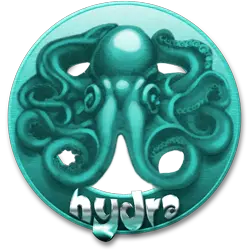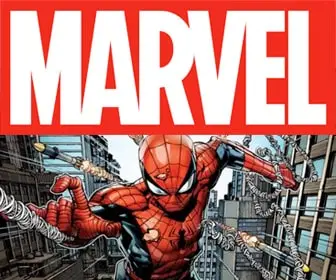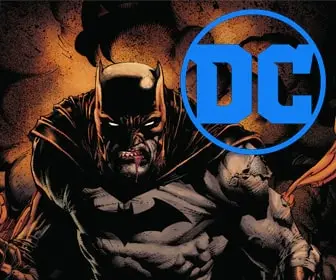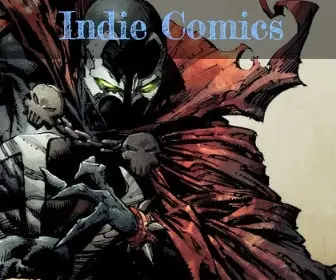
Ronin: A Samurai’s Fury in Neon Noir
Frank Miller’s Ronin: A Samurai Lost in a Future New York
Comic book legend Frank Miller, the mind behind gritty tales like Batman: The Dark Knight Returns and Sin City, wasn’t always the master of his own creative destiny. Early in his career, he worked on characters for hire, breathing life into superheroes owned by big publishing companies. But Ronin, a six-issue comic book miniseries published in the early 1980s, was different. It was Miller’s chance to fully unleash his creative vision, a project he fiercely maintained ownership of.
Ronin throws a curveball right at the start. Imagine a stoic samurai warrior, clad in ancient armor, but instead of battling on a feudal battlefield, he’s slashing his way through the neon-drenched alleys of a futuristic New York City. This fusion of classic samurai themes and a cyberpunk future is what makes Ronin so unique. It’s more than just a cool aesthetic choice, though. It’s a story that explores ideas of being out of place, fighting for what’s right in a broken world, and the struggle to hold onto honor when the world around you has lost its way.
Where Did Ronin’s Wild World Come From?
So, what sparked Frank Miller’s imagination to create this wild mix of samurai and skyscrapers? Well, get this – Miller was a huge fan of kung fu movies! He loved the action and the cool fighting styles. But Ronin wasn’t just about kicks and punches. Miller also drew inspiration from Japanese comics, even though he couldn’t read them at the time! He flipped through the pages, soaking up the dramatic art style and the stories of samurai warriors.
Think about movies like the old detective films where everything is dark and shadowy. Those “film noir” movies also influenced Ronin’s atmosphere. Miller wanted his future New York to feel gritty and mysterious, just like those classic films.
Maybe you’ve heard about comic book creators feeling frustrated sometimes. Back in the day, Miller wasn’t always happy working on characters for other companies. With Ronin, he finally had a chance to create his own world and tell his own story exactly the way he wanted. It was a chance to be his own boss, kind of like a samurai who answers to no one but himself!
Building a Broken World and a Wanderer With No Home
The main character of Ronin is, well, a ronin. That’s the Japanese word for a samurai warrior who has no master to serve. In Miller’s story, this ronin isn’t just masterless, he’s completely out of place. Imagine a fish living on land – that’s kind of what the ronin feels like in New York City. He’s a symbol of honor and tradition trapped in a world filled with crime and decay. What keeps him going? Revenge. He’s driven by a powerful need to avenge a terrible wrong.
The New York City that Miller creates is a far cry from the bustling tourist destination we know today. It’s a dystopian nightmare, choked by pollution and crawling with danger. The towering skyscrapers cast long shadows, hiding the city in a perpetual twilight. This dark and gritty world reflects the inner turmoil of the ronin himself. He’s lost and searching for meaning in a world that seems to have lost its way. Through the ronin and the broken city, Miller explores themes that are still relevant today, like the struggle to find your place in a complex world and the importance of holding onto what you believe in, even when everything around you seems hopeless.
Bringing Ronin’s World to Life: Bold Lines and Shadowy Depths
Frank Miller’s art style in Ronin is like a punch to the gut – bold, powerful, and unforgettable. He uses heavy blacks to create stark contrasts between light and shadow. Imagine a black and white photograph where everything is super crisp and clear, but then splashed with dramatic shadows that make the characters and scenery almost pop off the page.
Miller also uses the way he lays out each page to tell the story. Sometimes he uses a grid of panels, like squares on a chessboard, to keep the action moving fast. Other times, he uses giant, full-page spreads to showcase a particularly dramatic moment. It’s like Miller is zooming in and out with a giant camera, making you focus on what’s most important in each scene.
This unique style isn’t just cool to look at, it perfectly complements the themes of the story. The harsh contrasts between light and dark reflect the moral ambiguity of the world the ronin inhabits. The dynamic layouts mirror the ronin’s own inner struggle as he fights for justice in a chaotic world.
Ronin’s Lasting Impact: A Samurai’s Legacy
Frank Miller’s Ronin wasn’t just a comic book, it was a game-changer. Critics loved it, praising its originality and powerful storytelling. Ronin influenced a whole generation of comic creators who followed, inspiring them to create dark and gritty stories with complex characters. It’s kind of like how a single guitar riff from a legendary rock band can inspire countless other musicians.
Ronin’s impact goes beyond the comic book world too. It’s a story that explores timeless themes that resonate with readers even today. It makes you think about what it means to be an outsider, to fight for what’s right, and to stay true to yourself in a world that seems determined to break you. So next time you see a comic book with a dark, shadowy style or a story about a lone warrior facing impossible odds, remember Ronin – the samurai who walked the mean streets of a future New York City and left a lasting mark on the world of comics.















